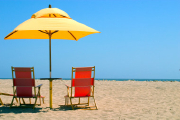| Heritage | Rs.4,999 |
| Honeymoon | Rs.54,000 |
| Liesure | Rs.6,930 |
| Royal | Rs.6,930 |
| Ayurveda & Spa | Rs.48,000 |
| Family | Rs.4,999 |
| Weekend Getaway | Rs.6,930 |
| Tour | Rs.17,400 |
| 2 nights/ 3 days | Rs.4,999 |
| 5 or more nights | Rs.17,400 |
| Upto Rs.15,000 | |
| Rs.15,001 to 30,000 | |
| Rs.30,001 to 40,000 | |
| Rs.40,001 & Above |
 |

Mandawa (Rajasthan)Introduction: In the heart of the Shekhawati region of Rajasthan lies the beautiful small town Mandawa, known throughout the state for its forts and havelis.
History: The compact and busy little market town of Mandawa was settled and fortified in 18th century by the dominant merchant families of the region. The wealthy businessmen of the village constructed many havelis and baolis with colored painting adorning their walls. Later on, with the migration of these merchant families, their old settlements remained in total obscurity with no one to look after them. Despite the time lapse and ignorance about these visual and architectural extravaganzas, their attraction did not fade and today they are some of the major attractions for the tourists visiting Rajasthan. Description: Mandawa, known throughout the state for its forts and havelis. The structures of this place reminds one of the cultural and social hotspot this place used to be in the bygone era. |
||

Mandawa Quick factsMandawa Geography and Climate
Best time to visit Mandawa
Mandawa Distance(s)
Distances from Mandawa
How to reach Mandawa by RoadRoad networks crisscross the entire region of Shekhawati, and Mandawa is well connected with other places in the region by private as well as government buses. It is a good idea for groups of four or five persons to hire taxis to move around the place. How to reach Mandawa by Rail
Click on link
for a list of trains to various cities
How to reach Mandawa by Air
 Top Top
|
||

Mandawa Festivals and cultureMandawa FestivalsCamel Festival: The festival starts off with a parade of beautifully decorated camels from the Junagarh Fort. The camel owners make sure that their camels do not look lesser than the other camels. They decorate the camels with colourful bridles and saddles and tie anklets around the feet. The processions comes out in the open where the festivity takes another step forward. Mandawa CultureThe best way to experience the culture and heritage of this region is by going on safaris by camel, horse, or Jeep. Hotels can arrange these safaris on request but prior notice is essential. Mandawa Religious Places
Mandawa Monuments
Nawalgarh: It is situated around 37 km south of Mandawa and is famous for its fort, built in 1737. Other attractions here include havelis of Anandi Lal Poddar, Aath Haveli, Hem Raj Kulwal Haveli, Bhagton Ki Haveli, and Khedwal Bhavan.  Top Top
|
||

Mandawa Entertainment and Night LifeKidding around MandawaTal Chhapar: Home to the endangered species of black buck and some migratory birds. Mandawa Shopping
Mandawa Museum and Hill Stations
Lake at Mandawa
In Hindu mythology, Pushkar is a holy location: it is the spot where the lotus dropped by Lord Brahma (the Creator God) fell to the earth. A beautiful little lake is said to have sprang out of the Thar desert when this happened: this is Pushkar Holy Lake, regarded by Hindus as one of the most sacred sites in India. Mandawa SeasonalsThe climate of Mandawa, like most other Rajasthan cities, is of an extreme type. The summer season is very hot, with the maximum temperature reaching up to 40.5° C. Mandawa weather experiences cold and chilly winters. The average temperature in winter season may be as low as 10° C. The monsoon season sees average annual rainfall in the range of 45 to 60 cm. As per the climatic conditions of Mandawa, Rajasthan, the best time to visit the place is during the months of October to March.  Top Top
|
||

Mandawa TipsMandawa Travel Tips
Must do at Mandawa
 Top Top
|







